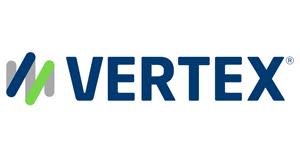Vertex 2023 Mid-Year Sales Tax Rates and Rules Report: New District Rate Changes Soared During First Half of 2023


KING OF PRUSSIA, Pa., July 13, 2023 (GLOBE NEWSWIRE) -- Vertex, Inc. (NASDAQ:VERX) (“Vertex” or the “Company”), a global provider of tax technology solutions, released its 2023 annual Mid-Year Sales Tax Rates and Rules report, which found that the number of changes in jurisdiction rates across the U.S. have increased by more than 40% through June 30 compared to the same period last year. Proving once again that agility will be crucial for businesses to meet their compliance obligations.
During the first half of 2022, there were a total of 302 new sales taxes and tax rate changes at the state, county, city and district levels. This year, that total increased to 431—a 43% bump.
Driving this increase is a surge in new taxing cities with 37 so far in 2023 compared to 22 in the first half of 2022. A large increase in district-level sales tax rate changes —148 so far this year vs. 37 in the first half of 2022. Most of those district-level rate changes were decreases. The volume of these changes complicates tax compliance activities for the sales and use tax community.
There are myriad reasons why state and local government organizations have been increasingly relying on sales tax to fund ongoing operations. Other than economic reasons, sales taxes tend to be easier to administer and collect. Over the past 60 years, in times of adverse economic cycles, sales taxes have provided a more resilient method of funding relative to income and property taxes.
“Tax groups must continue to be agile to ensure their organizations address the growing number of indirect taxes that states and other local jurisdictions are enacting,” said Michael Bernard, Vertex Chief Tax Officer and VP of Tax Content. “It is important for tax professionals to monitor what is driving all of these changes as they navigate the ever-shifting indirect tax landscape.”
The dynamics and trends that are impacting sales tax and rates changes and the driving forces behind them, include:
Taxing districts require more funding: Through the first half of this year, 101 new district taxes (such as fire & rescue and parks) have come online. This explosion in new district taxes is about funding. Districts have seen the cost of goods and services compound due to inflation over the past several years. Issuing additional debt is more challenging today because interest rates have risen and are likely to stay high for some time. All of this means that taxing districts are expected to continue to enact new taxes to address their revenue needs.
Exemptions are also adding up: State legislatures continue to introduce an assortment of temporary and permanent sales tax exemptions. Combined with a related desire to limit income tax and property tax rate increases, the growing use of exemptions is accelerating the narrowing of the state tax base. This places greater pressure on sales and use taxes as a driver of revenue for state and local tax jurisdictions. Sales tax exemptions pose a range of challenges to indirect tax groups and other stakeholders. According to the Tax Foundation, tax holidays generally don’t increase economic activity because they are targeted toward items consumers will necessarily purchase. Because most holidays are temporary, they only complicate sales and use tax compliance for businesses.
A “fee-for-all” trend also requires attention: As we know, fees in addition to sales tax, have become a popular method of funding for state and local jurisdictions. Environmental “green” fees have grown substantially over the past several years and that trend continues. So far this year, states including Maryland, Maine, Oregon, Colorado and California have enacted legislation that attaches new environmental fees to plastic, paper, glass, and metallic packaging materials. Vertex solutions currently support upwards of 1,000 different fees, the majority of which are “green” fees. Beyond that, state and local jurisdictions continue to come up with new fees, including airport and retail delivery fees. Much like the other trends above, this means additional complexity for tax groups that are already grappling with high volumes of rate changes and new sales taxes.
While our Rates and Rules report focuses solely on U.S. sales and use taxes and fees, a significant amount of legislative and policy work is being considered around value-added tax. VAT generally focuses on einvoicing and marketplaces and much of that legislative activity will produce significant changes toward the end of the calendar year 2023. We will be back writing on the progress of these items in the fall.
For more information, download the full 2023 Mid-Year Sales Tax Rates and Rules Report here.
About Vertex
Vertex is a leading global provider of indirect tax software and solutions. The company's mission is to deliver the most trusted tax technology enabling global businesses to transact, comply and grow with confidence. Vertex provides solutions that can be tailored to specific industries for major lines of indirect tax, including sales and consumer use, value added and payroll. Headquartered in North America, and with offices in South America and Europe, Vertex employs over 1400 professionals and serves companies across the globe.
For more information, visit www.vertexinc.com or follow us on Twitter and LinkedIn.
Copyright © 2023 Vertex, Inc. All rights reserved. The information contained herein is intended for information purposes only, may change at any time in the future, and is not legal or tax advice. The product direction and potential roadmap information is not a guarantee, may not be incorporated into any contract, and is not a commitment to deliver any material, code, or functionality. This information should not be relied upon in making purchasing, legal, or tax decisions.
Company contact:
Rachel Litcofsky
Vertex, Inc.
mediainquiries@vertexinc.com

